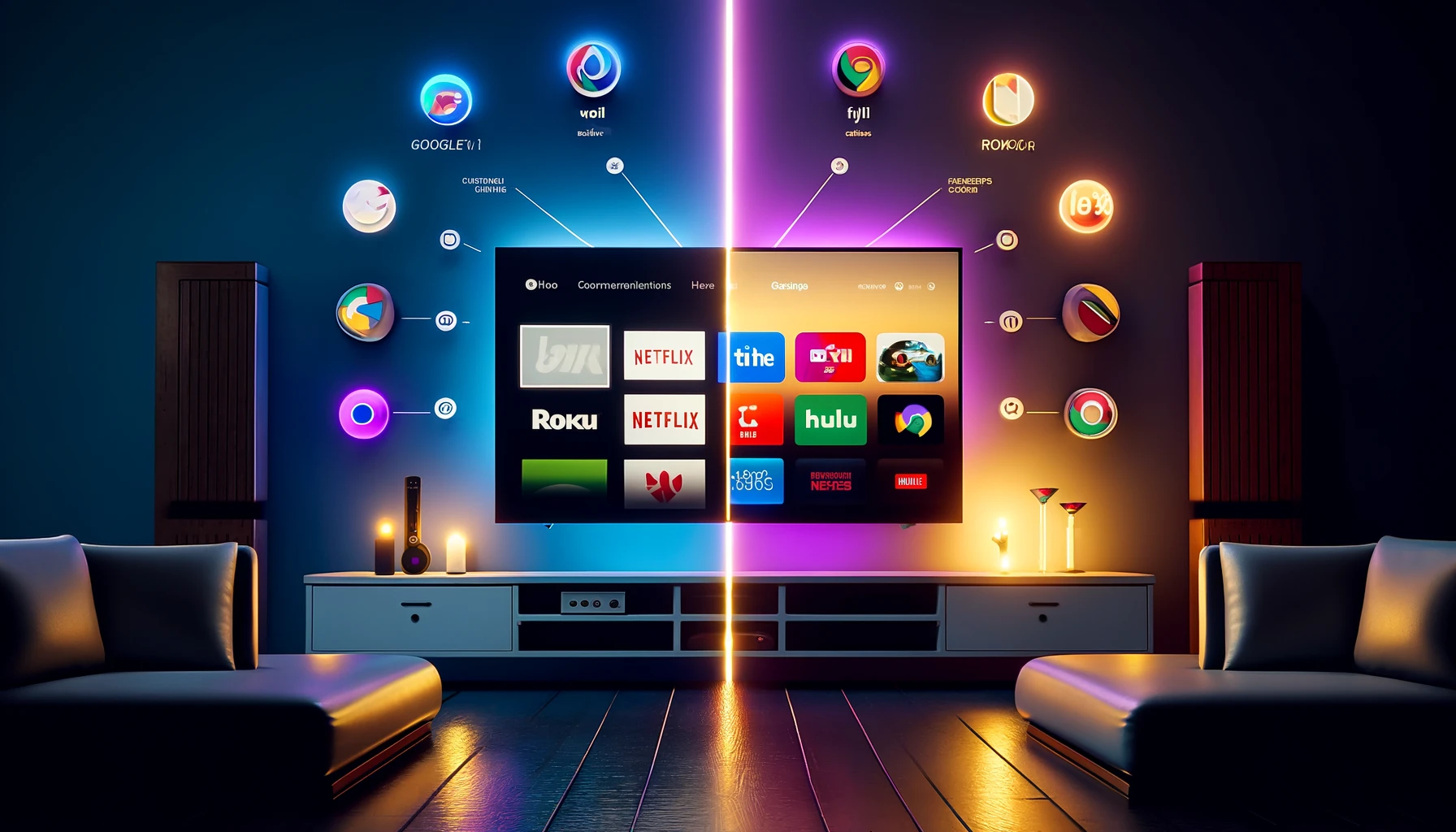In 2025, iOS and Android continue to dominate the mobile landscape, each appealing to different user needs. iOS stands out with robust privacy controls, seamless integration across Apple devices, and high-quality app selection, promoting user loyalty. On the other hand, Android thrives on customization options, flexibility, and a wider range of affordable devices. While iOS focuses on premium experiences and timely updates, Android’s fragmented ecosystem might lag in this aspect. Both platforms are improving in AI capabilities and user experience. To understand how these differences impact your choices, there’s more to explore about their features and future trends.
Key Takeaways
- iOS will continue to prioritize privacy features, ensuring robust data protection amidst increasing concerns over user information security.
- Android is expected to enhance customization options, providing users with more personalized experiences and improved multi-tasking capabilities.
- Both platforms are likely to invest in AI and machine learning, leading to smarter functionalities and better user experiences.
- iOS devices may maintain higher resale value, while Android offers a wider range of affordable devices catering to diverse budgets.
- Cross-platform compatibility is anticipated to improve, allowing seamless interactions between iOS and Android users in 2025.
Overview of Ios and Android
When it comes to mobile operating systems, iOS and Android stand out as the two giants that have shaped the landscape of smartphones. Each has carved out a significant market share, influencing not only device manufacturers but also app developers and consumers alike. iOS, developed by Apple, offers a tightly controlled ecosystem that enhances user experience through seamless integration of hardware and software. This approach often results in a polished interface and reliable performance, appealing to users who prioritize consistency and quality.
On the other hand, Android, backed by Google, boasts a more open-source framework. This flexibility allows for a wider range of devices and customization options, catering to diverse user preferences. Consequently, Android holds a larger market share globally, particularly in developing regions where affordability is key.
As you evaluate these two operating systems, consider how their differing philosophies impact user experience. While iOS may appeal to those who value a streamlined, curated experience, Android attracts users looking for versatility and customization. Your choice ultimately reflects your priorities in functionality, design, and overall use.
Key Features of Ios
When considering iOS, you’ll notice a strong emphasis on enhanced privacy controls that prioritize user data protection. The seamless ecosystem integration allows for a cohesive experience across Apple devices, making it easy to switch between your iPhone, iPad, and Mac. Additionally, advanced security features provide robust defenses against potential threats, reinforcing iOS’s reputation for safety.
Enhanced Privacy Controls
Privacy has become a cornerstone of user trust in mobile technology, and iOS continues to lead the charge with enhanced privacy controls. Apple’s commitment to data protection is evident through its suite of robust privacy features designed to empower you as a user.
One standout feature is App Tracking Transparency, which requires apps to seek your permission before tracking your activity across other apps and websites. This gives you greater control over your personal data, allowing you to decide who can access it. Additionally, iOS includes privacy labels in the App Store, providing you with a clear overview of how apps handle your information before you download them.
Furthermore, iOS offers features like Mail Privacy Protection, which prevents senders from knowing when you open an email and masking your IP address. These tools collectively enhance your ability to safeguard personal information, making iOS a strong contender for users who prioritize privacy.
In a world where data breaches are rampant, Apple’s proactive approach to privacy guarantees that you can navigate your digital life with confidence, knowing your information is better protected against unauthorized access.
Seamless Ecosystem Integration
Apple’s ecosystem excels in seamless integration, making it easy for you to connect and interact across devices. This tight-knit ecosystem allows you to effortlessly shift between your iPhone, iPad, Mac, and Apple Watch, enhancing your overall user experience. The continuity features, like Handoff and Universal Clipboard, enable you to start a task on one device and pick it up on another without missing a beat.
Unlike many Android devices that often struggle with cross platform compatibility, Apple guarantees its products work harmoniously together. You can answer calls, send texts, and even manage notifications across all your Apple devices, creating a fluid experience that feels intuitive and cohesive. Apps like AirDrop further facilitate seamless device interaction, making file sharing incredibly simple.
Moreover, Apple’s commitment to a unified ecosystem means that updates and new features are consistently rolled out across devices, keeping your experience consistent. This level of integration not only enhances productivity but also fosters a sense of loyalty among users. In 2025, as technology continues to evolve, Apple’s seamless ecosystem integration will likely remain a significant advantage over its competitors, guaranteeing that you stay connected and efficient in your daily activities.
Advanced Security Features
Enhancing user security, iOS has built a reputation for its robust security features that prioritize protecting personal data. One of the standout features is biometric authentication, which includes Face ID and Touch ID. These methods not only provide convenience but also guarantee that only you can access your device and sensitive information. This level of security is particularly vital in today’s world, where data breaches are increasingly common.
In addition to biometric options, iOS employs end-to-end encryption for messaging services like iMessage and FaceTime. This means that your communications are secured from the moment they leave your device until they reach the recipient, making it nearly impossible for third parties to intercept your conversations.
Apple’s commitment to privacy extends to regular software updates, enhancing security against emerging threats. With features like App Tracking Transparency, you have more control over how your data is shared across apps.
In 2025, these advanced security features will likely continue to evolve, reinforcing iOS’s position as a leader in user data protection and privacy. Overall, you can trust that iOS remains dedicated to safeguarding your digital life.
Key Features of Android
Android’s versatility stands out as one of its key features, offering users a customizable experience tailored to individual preferences. With regular Android upgrades, you can expect an evolving user experience that enhances functionality and introduces new features. This adaptability is particularly appealing for those who want their device to reflect their unique style and needs.
Here’s a quick overview of some essential features of Android:
| Feature | Description | Benefit |
|---|---|---|
| Customization | Users can change launchers, widgets, and themes | Personalizes user experience |
| Multi-tasking | Allows running multiple apps simultaneously | Increases productivity |
| Google Assistant | Voice-activated assistant for tasks and queries | Simplifies daily tasks |
These features contribute to a more engaging user experience, allowing you to navigate your device in a way that suits you best. As you explore Android in 2025, you’ll find that its inherent flexibility and integration with Google services continue to set it apart from the competition, providing a platform that meets diverse user needs.
App Ecosystem Comparison
When comparing the app ecosystems of iOS and Android, you’ll notice distinct trends in app availability and developer support. iOS typically offers a more curated selection of high-quality apps, while Android provides a broader range of options due to its open nature. Understanding these differences can help you choose the platform that best meets your needs in 2025.
App Availability Trends
Typically, the app availability trends between iOS and Android showcase a stark contrast in their ecosystems. As of 2025, both platforms have developed unique strengths that influence app store optimization and user engagement.
Consider these key trends:
- Diverse App Offerings: Android’s open system allows for a wider variety of apps, attracting niche markets.
- Quality Over Quantity: iOS apps tend to focus on quality, resulting in higher user satisfaction and engagement.
- Frequent Updates: iOS developers often prioritize updates, keeping apps current and relevant, while Android apps might lag behind.
- Monetization Strategies: iOS generally sees higher revenue per app due to its user demographic’s willingness to spend on apps.
- Emerging Markets: Android dominates emerging markets, leading to an increase in localized apps tailored for specific regions.
These trends highlight how iOS and Android are catering to different user bases. While Android thrives on variety and accessibility, iOS emphasizes quality and user experience. As you explore these ecosystems, understanding these trends can greatly impact your app strategy, ensuring ideal app store optimization and heightened user engagement.
Developer Support Differences
The stark differences in app availability trends highlight the varying levels of developer support within the iOS and Android ecosystems. On iOS, Apple’s commitment to high documentation quality and stringent coding standards fosters an environment where developers can easily access the tools they need. This focus on developer tools leads to quicker app development cycles and better app monetization strategies. However, the closed nature of the platform can limit market reach for developers.
In contrast, Android offers greater platform accessibility, attracting a diverse range of developers. The extensive support forums and community engagement encourage collaboration and innovation. Yet, inconsistencies in coding standards can create challenges in app quality, potentially impacting user feedback and overall satisfaction.
Moreover, Android’s developer incentives, such as revenue-sharing models, are often more favorable than those on iOS, which can drive more developers to the platform. Ultimately, while iOS delivers a more streamlined development experience with higher-quality apps, Android’s flexibility and community-driven support create a vibrant, if sometimes chaotic, ecosystem. The choice between the two will largely depend on what you prioritize: quality or market reach.
User Interface Experience
User interface experience plays an essential role in determining how users interact with their devices, and by 2025, both iOS and Android will likely have evolved considerably in this aspect. As each platform adapts to user preferences, the design evolution will center on enhancing visual aesthetics and improving navigation simplicity.
You’ll notice notable advancements in accessibility features, ensuring that devices cater to a broader audience. Gesture controls are set to become more intuitive, allowing for seamless interactions that enhance user engagement. Additionally, both platforms will likely adopt more sophisticated interaction patterns, providing a consistent experience across apps.
Here are some key trends to expect:
- Enhanced visual aesthetics that prioritize minimalism and clarity
- Streamlined navigation simplicity for quicker access to essential functions
- Improved gesture controls to facilitate effortless interactions
- Thorough accessibility features accommodating diverse user needs
- Innovative design evolution that reflects changing user behaviors
As you explore these advancements, you’ll find that the user interface experience on both iOS and Android will remarkably impact how effectively you engage with your device in everyday life.
Security and Privacy Measures
In 2025, the security and privacy measures of both iOS and Android will be essential in safeguarding user data amidst increasing digital threats. Both platforms are expected to enhance their data encryption techniques, ensuring that sensitive information remains protected from unauthorized access. You’ll likely see iOS continuing its strong emphasis on end-to-end encryption, while Android may adopt more robust encryption standards across its devices.
Biometric authentication will play a significant role in both ecosystems. You’ll find that facial recognition and fingerprint scanning are standard features, simplifying secure access while bolstering security. However, the effectiveness of these methods hinges on the underlying algorithms and their resistance to spoofing attacks.
Privacy regulations will also shape the landscape in 2025. You’ll notice tighter compliance requirements across both platforms, driving companies to prioritize user consent when collecting data. This means clearer privacy policies and more user-friendly options for managing permissions, so you can control what information you share.
Ultimately, as digital threats evolve, both iOS and Android will need to adapt, enhancing their security and privacy measures to maintain user trust and protect sensitive data effectively.
Hardware Compatibility
When considering hardware compatibility in 2025, you’ll notice the stark contrast between iOS and Android ecosystems. Android’s device variety offers you a plethora of options, but this can lead to fragmentation that complicates software updates and feature availability. In contrast, Apple’s tighter control over its hardware guarantees a more uniform experience, but it limits your choices.
Ecosystem Fragmentation
Ecosystem fragmentation remains a considerable concern for both iOS and Android users in 2025, with hardware compatibility playing an essential role in the overall experience. As you navigate these platforms, you’ll encounter various fragmentation challenges that can impact your daily use.
For iOS users, ecosystem compatibility is generally more streamlined due to Apple’s control over both hardware and software. However, this doesn’t entirely eliminate issues, especially when accessing third-party devices. On the other hand, Android users face greater variability, as numerous manufacturers produce devices, leading to a less consistent experience.
Here are some key points to reflect on:
- Device Updates: iOS often has timely updates, while Android’s are sporadic.
- Accessory Compatibility: Apple’s ecosystem is tightly integrated, whereas Android devices may struggle with accessory compatibility.
- App Performance: Apps may run smoother on iOS due to optimized hardware-software integration.
- User Experience: You may find a more cohesive experience on iOS devices compared to the diverse Android landscape.
- Support Services: Customer support can vary considerably across Android manufacturers, impacting user satisfaction.
Understanding these factors can help you make informed decisions about your device choice.
Device Variety and Options
While iOS offers a limited selection of devices, Android stands out for its extensive variety, catering to a wide range of preferences and budgets. This diversity is a result of Android’s open-source nature, allowing multiple manufacturers to innovate and create a multitude of devices. In 2025, you’ll find everything from budget-friendly smartphones to high-end flagship models, illustrating effective market segmentation.
Here’s a breakdown of the current landscape:
| Device Type | iOS Devices | Android Devices |
|---|---|---|
| Budget | N/A | Entry-level budget phones |
| Mid-range | iPhone SE | Mid-range options from various brands |
| Flagship | iPhone 15 Pro Max | Premium devices from Samsung, Google, etc. |
| Specialty | N/A | Gaming phones, foldables, etc. |
This variety not only enhances user choice but also drives device innovation across the Android ecosystem, ensuring that there’s something for everyone. As you evaluate your options, consider how these factors influence your overall experience with either operating system.
Performance and Speed
In 2025, the performance and speed of iOS and Android devices are poised to reach new heights, offering users a seamless experience that caters to their diverse needs. Both platforms have made significant strides in speed optimization, guaranteeing that tasks are executed swiftly and efficiently. Performance benchmarks will reveal that users can expect lightning-fast app launches, smooth multitasking, and impressive gaming experiences, regardless of their choice between iOS or Android.
Here are some key factors shaping performance and speed:
- Advanced processors: Both platforms are likely to feature next-gen chips that enhance processing power.
- Improved RAM management: Expect better handling of background apps, resulting in a more responsive experience.
- Software updates: Regular updates will guarantee devices stay optimized for speed.
- Enhanced graphics performance: Mobile gaming will be more immersive with improved graphics capabilities.
- 5G integration: Faster internet speeds will enhance cloud-based applications and streaming services.
Ultimately, whether you’re an iOS or Android user, 2025 is set to deliver devices that redefine what speed and performance mean in the mobile landscape.
Customization Options
With performance and speed reaching impressive levels, users are increasingly looking to how they can tailor their mobile experience. Customization options play an essential role in this endeavor, particularly when comparing iOS and Android in 2025.
Android has long been celebrated for its extensive customization capabilities. You can create custom themes that reflect your personal style, choosing from numerous color schemes, icon packs, and layouts. Additionally, widget customization allows you to add functionality directly to your home screen, enabling you to prioritize the information that matters most to you. This level of personalization means your device can feel uniquely yours.
On the other hand, iOS has traditionally offered a more uniform experience, but recent updates have introduced some customization features. While you can modify the home screen layout and add widgets, the options remain limited compared to Android. Custom themes aren’t as flexible, which may frustrate users seeking deeper personalization.
Ultimately, if you value extensive customization options like custom themes and widget customization, Android remains the superior choice. For users who prefer a streamlined, cohesive interface, iOS still holds its appeal, but the gap is narrowing as both platforms evolve.
Ecosystem Integration
Ecosystem integration greatly influences user experience, especially when comparing iOS and Android in 2025. Both platforms have made strides in ecosystem compatibility, but they cater to different user needs. iOS continues to excel in creating a seamless environment for users who own multiple Apple devices. You’ll find that everything from your iPhone to your MacBook works harmoniously together, making tasks more efficient.
On the other hand, Android is increasingly focusing on cross-platform functionality. This allows users to connect various devices, including smart home products and wearables from different manufacturers. Depending on your lifestyle, either ecosystem could be more appealing.
Here are some considerations for you:
- Device Cohesion: How well your devices work together.
- Third-Party Integration: Compatibility with non-native apps and devices.
- User Experience: Ease of moving between devices.
- Flexibility: Options to customize your ecosystem.
- Future-Proofing: Adaptability to new technologies and devices.
Ultimately, your choice between iOS and Android in 2025 will depend on how much you value ecosystem compatibility and the degree of cross-platform functionality you need.
Updates and Support
When it comes to updates and support, both iOS and Android offer distinct approaches that can greatly influence user satisfaction. iOS is known for its high update frequency, releasing major updates annually alongside smaller patches throughout the year. This consistency guarantees that users receive the latest features and security enhancements promptly. Additionally, Apple typically provides long support duration for its devices, often extending software updates for five years or more. This longevity creates a sense of reliability for users who invest in Apple products.
On the other hand, Android’s update frequency can vary considerably based on the manufacturer. While Google’s Pixel devices see regular updates, other brands may lag behind, leading to inconsistent user experiences. Support duration also varies greatly among Android devices, with some manufacturers only offering a couple of years of updates, while others may commit to longer support. This fragmentation can frustrate users who expect timely updates and longevity.
Ultimately, if you’re leaning towards a platform that prioritizes regular updates and extended support, iOS might be the more reliable choice. However, if you value customization and a wider range of device options, Android’s offerings may still appeal to you.
Pricing and Value
Pricing and value are essential factors that can greatly impact your decision between iOS and Android in 2025. As you weigh your options, it’s important to evaluate how each platform aligns with your budget considerations and what kind of value you’re getting for your investment.
When it comes to iOS, you typically pay a premium for the latest devices. This often translates to higher initial costs, but many users argue that the seamless ecosystem and consistent updates justify the expense. On the other hand, Android offers a wider range of devices at various price points, making it more accessible to different budgets.
Here are some key points to keep in mind:
- Device Range: Android’s diverse selection caters to various price brackets.
- Long-Term Value: iOS devices often maintain their value better over time.
- Customization: Android allows for more personalized experiences, which can enhance perceived value.
- Software Longevity: iOS tends to receive longer software support, affecting overall value.
- Accessories and Ecosystem: Evaluate the cost of accessories and integrations with other devices.
Ultimately, balancing budget considerations with value comparisons will help you make the right choice for your needs.
Future Trends and Predictions
Anticipating the future of mobile technology reveals exciting trends that could shape the iOS and Android landscape in 2025. As both platforms evolve, you’ll notice significant future innovations driven by user needs and market dynamics. For instance, the integration of AI in app development will enhance personalization, while 5G technology will boost app performance and connectivity.
Here’s a snapshot of potential trends:
| Trend | iOS Innovations | Android Innovations |
|---|---|---|
| AI Integration | Enhanced Siri features | Google Assistant upgrades |
| Device Compatibility | Seamless multi-device use | Diverse hardware options |
| Privacy Features | Advanced tracking controls | Open-source transparency |
In this competitive environment, you’ll see both platforms working to outdo each other. iOS may focus on user privacy and ecosystem cohesion, while Android might prioritize customization and affordability. With evolving market dynamics, it’s essential to stay informed about these trends, as they’ll directly impact your user experience and choices in the coming years. Embracing these innovations will help you maximize the potential of your mobile device, regardless of your platform preference.
Frequently Asked Questions
How Do Ios and Android Handle Accessibility Features for Disabled Users?
Both iOS and Android prioritize accessibility, offering robust screen readers and gesture navigation. You’ll find intuitive features designed to assist disabled users, ensuring they can navigate their devices effectively, enhancing their overall experience.
What Are the Differences in Voice Assistant Capabilities Between Ios and Android?
Imagine a wise owl and a clever fox guiding you. Each platform’s voice assistant features shine differently. The owl’s Siri integrates smoothly with iOS, while the fox’s Google Assistant offers broader virtual assistant integration, adapting to diverse needs.
How Do Ios and Android Manage Battery Life Optimization?
Both iOS and Android utilize battery saver modes to extend usage, but they differ in charging efficiency approaches. iOS often prioritizes background activity reduction, while Android allows for more customizable settings based on user preferences.
What Are the Environmental Impacts of Ios vs. Android Devices?
Isn’t it curious how sustainability practices and recycling programs shape our devices? You’ll find iOS focuses on eco-friendly materials, while Android offers varied approaches, leading to different environmental impacts. Your choice matters for our planet.
How Do Ios and Android Support Third-Party Hardware Integration?
When it comes to third-party hardware integration, iOS offers limited hardware compatibility, while Android’s software flexibility allows broader support. This difference influences your choices, depending on the devices you want to connect with your smartphone.
Conclusion
In the ongoing battle of iOS versus Android, it’s clear that each platform offers unique strengths tailored to different users. As the saying goes, “different strokes for different folks.” Your choice hinges on what you value most—whether it’s seamless integration, customization, or pricing. As technology evolves, staying informed will help you make the best decision for your needs. Ultimately, both ecosystems are poised to adapt and thrive in the ever-changing landscape of mobile technology.






